In València there is a dynamic market for rental and purchase homes. The historic district, the center and the residential areas offer good alternatives to choose housing in a quality urban environment. There are no specific neighborhoods for expatriates: the place of residence depends on individual preferences, location of offices, age group, income, etc. The different neighborhoods of the city have something to satisfy everyone’s needs and tastes and practically all services and amenities are close at hand: hospital, leisure facilities, libraries, offices, shops, green spaces and sports grounds.
Note that, in most neighborhoods of the city of València you will find residential buildings, so in case you are looking for a single-family house you will have to look in the outskirts of the city, also known as the metropolitan area.
If you enjoy this content, there is a complete València Welcome Guide that you can download here. Part of the Invest in Valencia Mission is to help you to accommodate in our city.
1. Ciutat Vella
It’s the old medieval center of the city – one of the oldest historic centers in Europe – which was originally protected by walls and the old river (that surrounded it to the north), now the beautiful Turia Gardens. Of the medieval wall there are hardly any ruins left and only two of its gates remain standing, the Serrano’s Towers (to the North) and the Quart Towers (to the West). Ancient buildings, palaces, museums, churches and narrow streets surround the Central Market and the Cathedral. The “Plaza del Ayuntamiento”, “Plaza de la Reina” and “Plaza de la Virgen” are the social and cultural centers of this area of the city. You can find small apartments, many buildings without elevator and with small staircases, and many shortterm rentals. It is also one of the most important leisure areas – filled with restaurants and pubs – in the city.
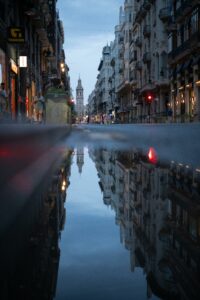 2. L’Eixample
2. L’Eixample
L’Eixample is a district near the old city (Ciutat Vella This exclusive neighborhood has a great amount of modernist architectural treasures and is home to the largest and most diverse shopping area in Valencia, from the department store “El Corte Ingles” to luxury and design boutiques. It also has a wide gastronomic and leisure offer that is constantly being renewed and expanded, with two distinct areas: Gran Via (aimed at a public with greater purchasing power) and Ruzafa (known as the Valencian “soho” and aimed at a younger audience). Emblems of this neighborhood are the “Mercado de Colón” – an imposing iron and brick building dating back to 1916 – the “Plaza de Toros”, and the “Estación del Norte” (train station that connects Valencia with the rest of Spain). The neighborhood is delimited by two large green areas: the Turia Garden and the new Central Park (Ruzafa).
3. Extramurs
Neighborhood located between the first and the third bypass roads of the city, in the central-western part. With a medium income level, there are significant differences between the areas that compose it. Chinatown stands out, close to the train station, which concentrates during the “fallas” festivities some of the most important fallas monuments of the city. Mainly a residential neighborhood, it features schools, parks, medical services…, and it’s very well connected. You can find elements of high architectural value such as “La Finca Roja”, the “Mercado de Abastos” (currently a high school and a sports center), or the Botanical Garden (with an important collection of plants).
4. Campanar
Campanar is located in the western part of the city. Its neuralgic center is the old village of Campanar, annexed to the city at the end of the 19th century, in which individual houses and narrow streets around the church still survive. In the last two decades there has been an important urban development in this neighborhood, with a predominance of wide avenues, as well as new and large buildings – most of which have common areas with swimming pools, gardens or paddle courts. The area closest to the old Turia river is composed of buildings constructed in the 60’s and 70’s, and features the first shopping center built in Valencia: “Nuevo Centro”. In the northernmost area, within the limits of the municipality, you can find another of the great parks of the city, “Parque de Cabecera”, and the new zoo: Bioparc, one of the most important and innovative in the world.
5. La Saidia
The name of the district comes from one of the palaces that King Zayd had on the site, where the Zaidía Monastery would later be built. It is well served by the metro system, with the terminal at “Pont de Fusta” leaving you a short five-minute walk to the riverbed and old town. The riverbed in this area has a rugby pitch, a baseball ground, and much more, making it an attractive place to live at a reasonable price. At one of its ends, it has the largest municipal park, the “Jardines del Real” (also called “Viveros”), with great environmental value, in which numerous music concerts are held during the summer months.
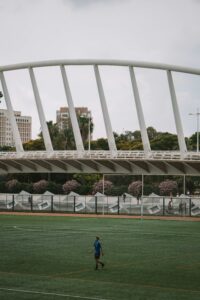 6. El Plà del Real
6. El Plà del Real
One of the districts with the highest purchasing power in the city. Bordering the “Jardines del Real” and the “Jardin del Turia”, it has a large avenue (Alameda), where you can enjoy the restaurants and the view of the parks. Pla del Real has some of the most attractive buildings in Valencia, such as the “Palacio de la Exposición”, as well as impressive bridges that cross the Turia – “Puente de las Flores” or “Puente de Exposición” (by Santiago Calatrava). This district is home to the Mestalla stadium, where “Valencia Club de Fútbol” plays its home games. Nearby are some of the main faculties of the University of Valencia, on Avenida Blasco Ibañez, which links this district with the seafront of the city.
7. L’Olivereta
Located at the western end of the city, it is, above all, a residential neighborhood of medium and mediumlow level income (depending on the area), so prices are lower than in more central city areas. However, it is very well equipped with services: schools (public and private), stores, hospitals (General Hospital of Valencia) and public transport. In the Nou Moles area and next to the “Parque de Cabecera”, you can also find a large part of the administrative city of the Generalitat Valenciana, located in what used to be the women’s prison, after its rehabilitation
8. Patraix
Bordering on the South with L’Olivereta and in the extreme west part of Valencia is Patraix, a mainly residential district. Located on the outskirts of the city of Turia, it is one of the most populated neighborhoods. Like Campanar, the district is named after the village of Patraix – annexed in 1870 – and maintains its essence around the square and the church, with pedestrian areas, low houses and quiet streets. Due to its proximity to the city center, reasonable prices and good quality properties, it’s becoming quite popular. It features the West Park (“Parque del Oeste”), local businesses and is well connected transport-wise. It is a growing neighborhood, with new constructions in the areas of Safranar and Favara, on the border with the Ronda Sur (fourth ring road of Valencia city). The area of Vara de Quart has one of the few industrial parks in the city of Valencia, which has a transforming project towards innovative, digital and sustainable activities. Two important hypermarkets, one retail and one wholesale, are also located in this área
9. Jesús
Boarded on the North by the new Turia, Jesús is located South of the city. It is one of the multicultural neighborhoods of the city, with affordable prices and medium and medium-low income. At the end of the 20th century, it had one of the highest demographic growth rates. Its future development is linked to the burying of the railroad tracks and the transformation of some old manufacturing and military facilities. San Vicente Street, the longest street in the city (almost 4 km), is its main axis, which starts in the center (“Plaza la Reina”) and ends at the Ronda Sur and the Municipal Cemetery. It has a hospital (Hospital Peset Alexandre).
10. Quatre Carreres
Quatre Carreres is located in the eastern part of the “Jardines del Turia”. It was modernized at the end of the 20th century with the construction of the City of Arts and Sciences. Quatre Carreres accumulates half of the new housing supply in all of Valencia – where in the past there were farmhouses and orchards – with an exponential growth of its population. In recent years it has developed new restaurant areas (around the City of Arts and Sciences), commercial areas (El Saler and Aqua Shopping Center) and one of the largest hospitals in Spain: La Fe Hospital. Another attraction in this neighborhood is the “Casal España Arena”, the new and modern headquarters of the Valencian basketball team that is being built.
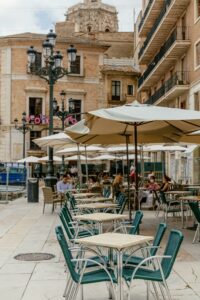 11. Poblados Marítimos
11. Poblados Marítimos
It constitutes the facade of the city to the Mediterranean Sea. Here you can find the largest Spanish beach in town, “La Malvarrosa” and “La Marina”, also known as Grau by locals. Being an old fishermen’s village, its architectural value is immeasurable. There are huts, fishermen’s houses, tiled facades, colorful buildings and modernist structures. Its different neighborhoods (Nazaret, Grao, Cabañal, Cañamelar and Malvarrosa) are very much valued by local inhabitants. Nazaret is the most modest neighborhood, in front of the Port of Valencia. El Grao has the attraction of the “Marina del Puerto Deportivo” (leisure and restaurants) and the headquarters of important innovative business accelerators such as EDEM or Innsomnia. Cabanyal and Malvarrosa have become a highly attractive neighborhood for young people (given the proximity of the two Valencian Universities) and for foreigners, where the proximity of the beach, the leisure and restaurant offer and the good communications by metro and bus with the center, are key to live in them.
12. Camins al Grau
It is the neighborhood that connects the city with the beach and the Port. With a high population density, of a medium economic level. Its proximity to the port is reflected in an important industrial tradition. The extension of the Alameda, next to the Turia Garden and the urbanization around the Baleares Avenue has given this neighborhood a new modernity. Camins al Grau is well connected with metro and bus routes and easy to walk or cycle to the beach and the center; remember, you are never far from the center. The gardens of Ayora are excellent and are right next to the metro station.
13. Algirós
Another Valencian neighborhood whose name comes from Arabic, specifically from al-zurûb, which means the canal, due to the Mestalla irrigation channel that reached the town of Cabañal with a winding route. It is a large area consisting largely of the properties surrounding the Avenida Blasco Ibáñez to the south and north and the faculties of the Tarongers Campus of the University of Valencia and the Polytechnic University. In addition, it is known for the large number of bars and pubs that are found and that animate the nights of this district. Among the main leisure areas are Cedro Zone and Honduras – Xúquer Zone
14. Benimaclet
The district of Benimaclet comprises the old village of the same name and the areas that have been urbanized around it. Benimaclet still maintains the essence of the village it was before it was incorporated as a district of Valencia: an architecture of low houses (two or three floors) with white facades or colorful ceramic tiles, the town square with its respective church and narrow streets. The neighborhood welcomes young students who choose it for its multiculturalism, cheap prices, its gastronomic offer and its proximity to the university; families looking for a quieter residential area; and people who have spent a lifetime in the same house. Within the boundaries of the neighborhood is the orchard of the municipality of Alboraya.
15. Rascanya
Located in the north of the city, it is an eminently residential neighborhood. It is known for housing the Levante UD soccer stadium, as well as one of the four shopping centers of the city: the Arena Shopping Center.
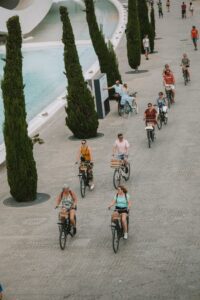 16. Benicalap
16. Benicalap
Benicalap was an independent municipality until the end of the 19th century, but it does not maintain the core of other neighborhoods such as Campanar or Benimaclet. Residential neighborhood, whose main attraction is the park of Benicalap, one of the largest green spaces in Valencia (with swimming pool and water park in summer). To the north of this neighborhood is Ciutat Fallera, a mainly industrial district, where many of the workshops where the fallas of Valencia are made can be found
17. Pobles del Nord
The Poblados del Norte are composed of seven villages that were annexed to Valencia between 1888 and 1900: Benifaraig, Poble Nou, Carpesa, Les Cases de Barcena, Mahuella-Tauladella, Masarrojos and Borbotó. Most of them have their origins in the Andalusian farmhouses that were scattered throughout the Valencian Huerta. Most of them are still surrounded by the Huerta and live from it and from the services (hotel business). Most of its inhabitants are natives. It is the district with the fewest inhabitants in the city since only about 6,000 people live here, and its population has remained more or less stable over the last century.
18.Pobles de l’Oest
The neighborhood is located to the west of the city. It comprises Benimámet and Beniferri. They have a little more than 15,000 inhabitants. This area houses the “Palacio de Congresos” and the “Feria Valencia”. It is located ten minutes by bicycle from the city.
19. Pobles del Sud
It includes seven districts in the south of Valencia, and unlike other neighborhoods, they have district mayors. It covers 20 km of coastline of the city of Valencia to the south of the Port of Valencia. It stands out for its natural and ecological value, with its 20 km of beaches (6 beaches), the Saler Natural Park and the Albufera. Although it is the usual residence for about 20,000 inhabitants, it is a beach tourist destination, especially for the population of the city center. In the case of El Palmar, it is a gastronomic destination (around 30 restaurants), but also an ecological (the lagoon), fishing (Albufera) and agricultural (rice) asset.
DOWNLOAD THE COMPLETE GUIDE
Did you find this content useful? Would you like to learn more about the landing process in our city? Find out all practical information you need to know about moving to Valencia in our Welcome Guide: Visa and permits information, Healthcare, Education, Postal Services, Sports, Entertainment options… it is all there!
 Paula Llobet further praised the move: “We are delighted that this tech company has chosen Valencia for its international expansion, reaffirming our city’s attractiveness as a strategic destination for technology companies aiming to expand their European footprint. This will generate new business and employment opportunities in key digital innovation sectors.”
Paula Llobet further praised the move: “We are delighted that this tech company has chosen Valencia for its international expansion, reaffirming our city’s attractiveness as a strategic destination for technology companies aiming to expand their European footprint. This will generate new business and employment opportunities in key digital innovation sectors.”
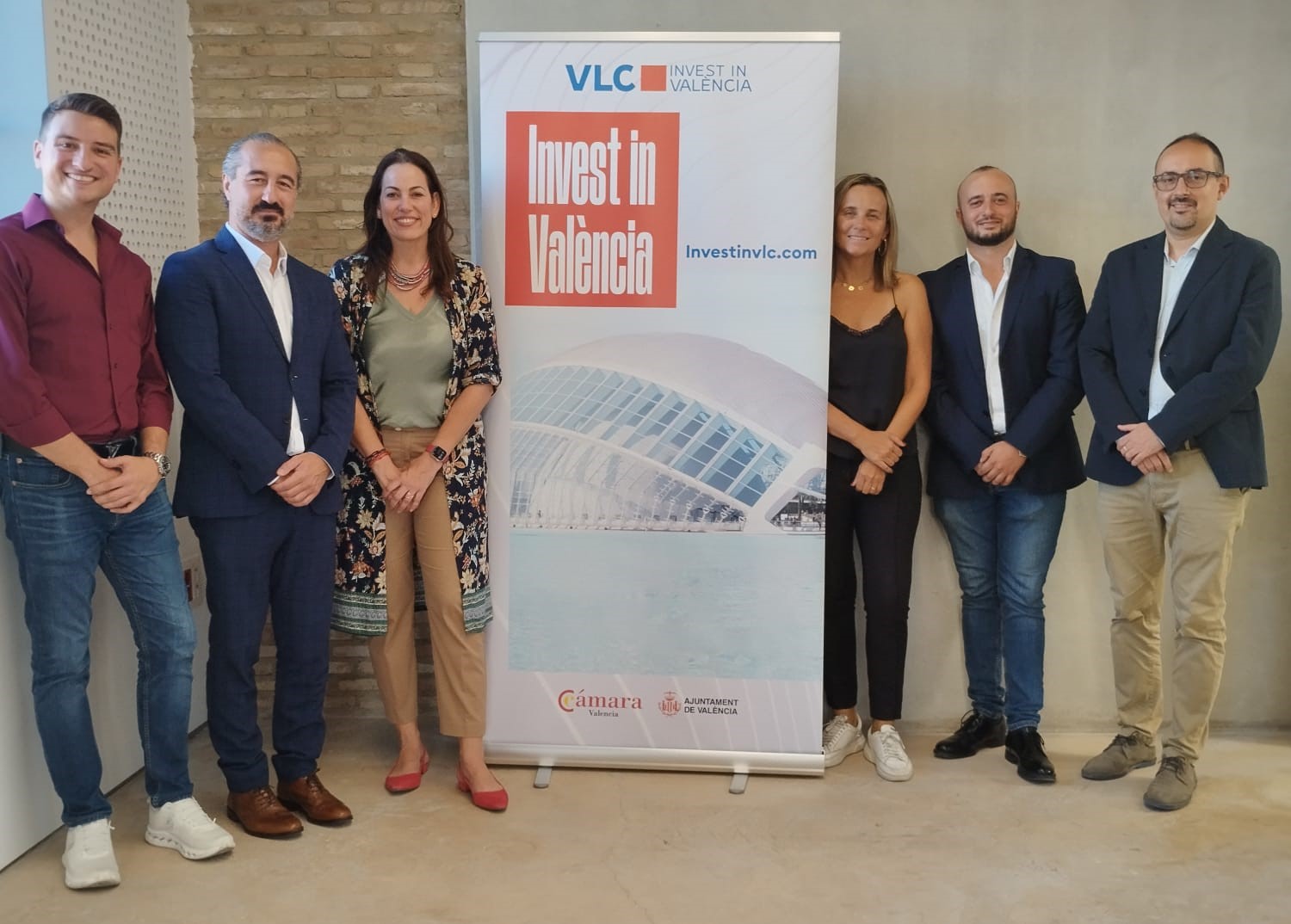


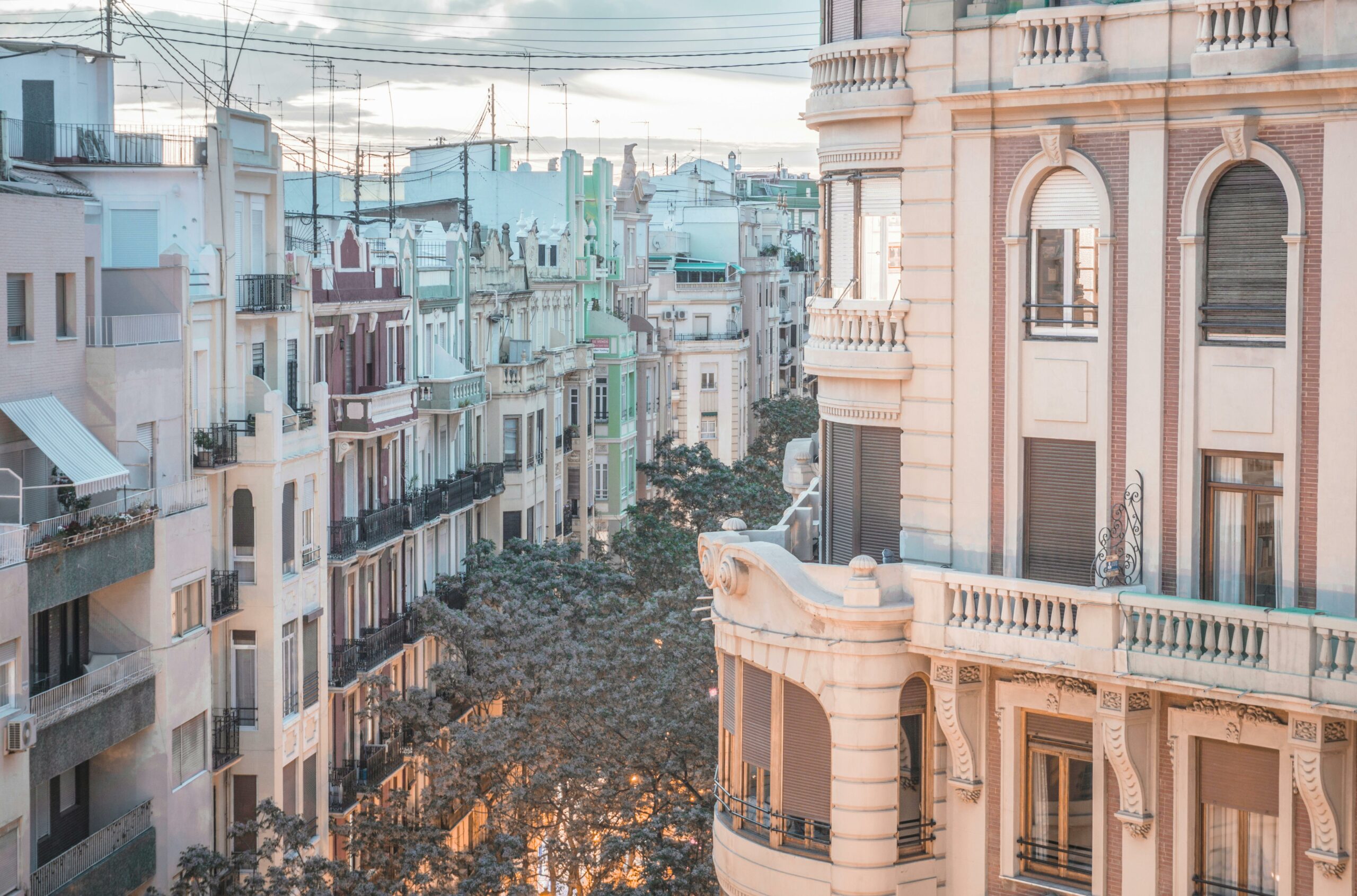
 2. L’Eixample
2. L’Eixample 6. El Plà del Real
6. El Plà del Real 11. Poblados Marítimos
11. Poblados Marítimos 16. Benicalap
16. Benicalap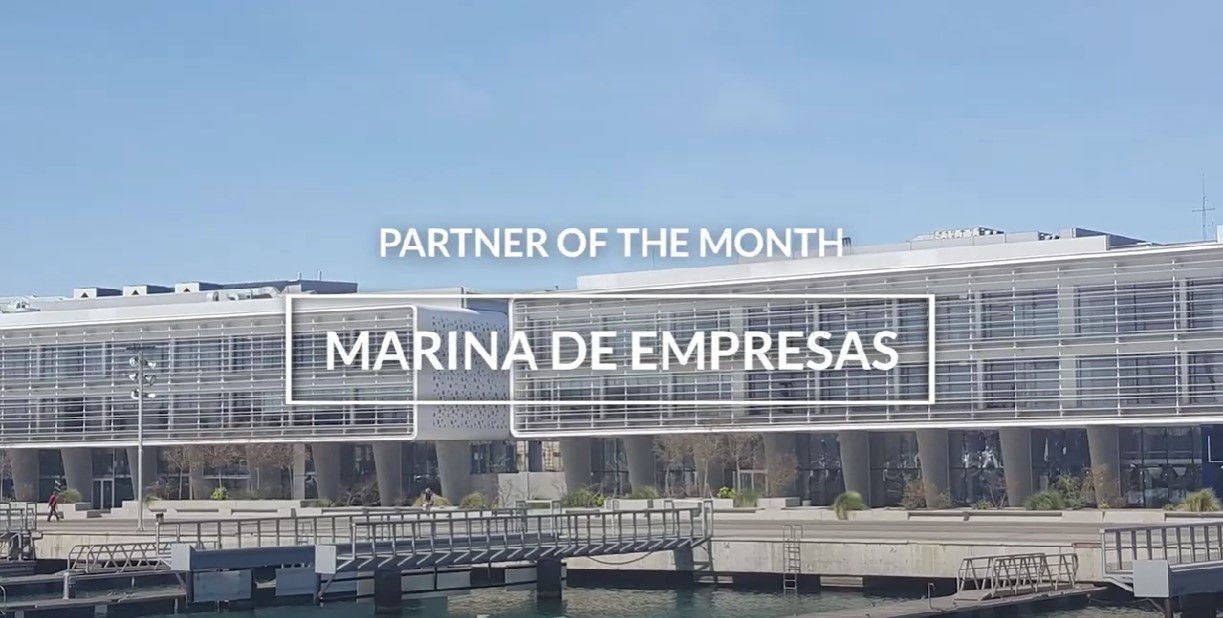

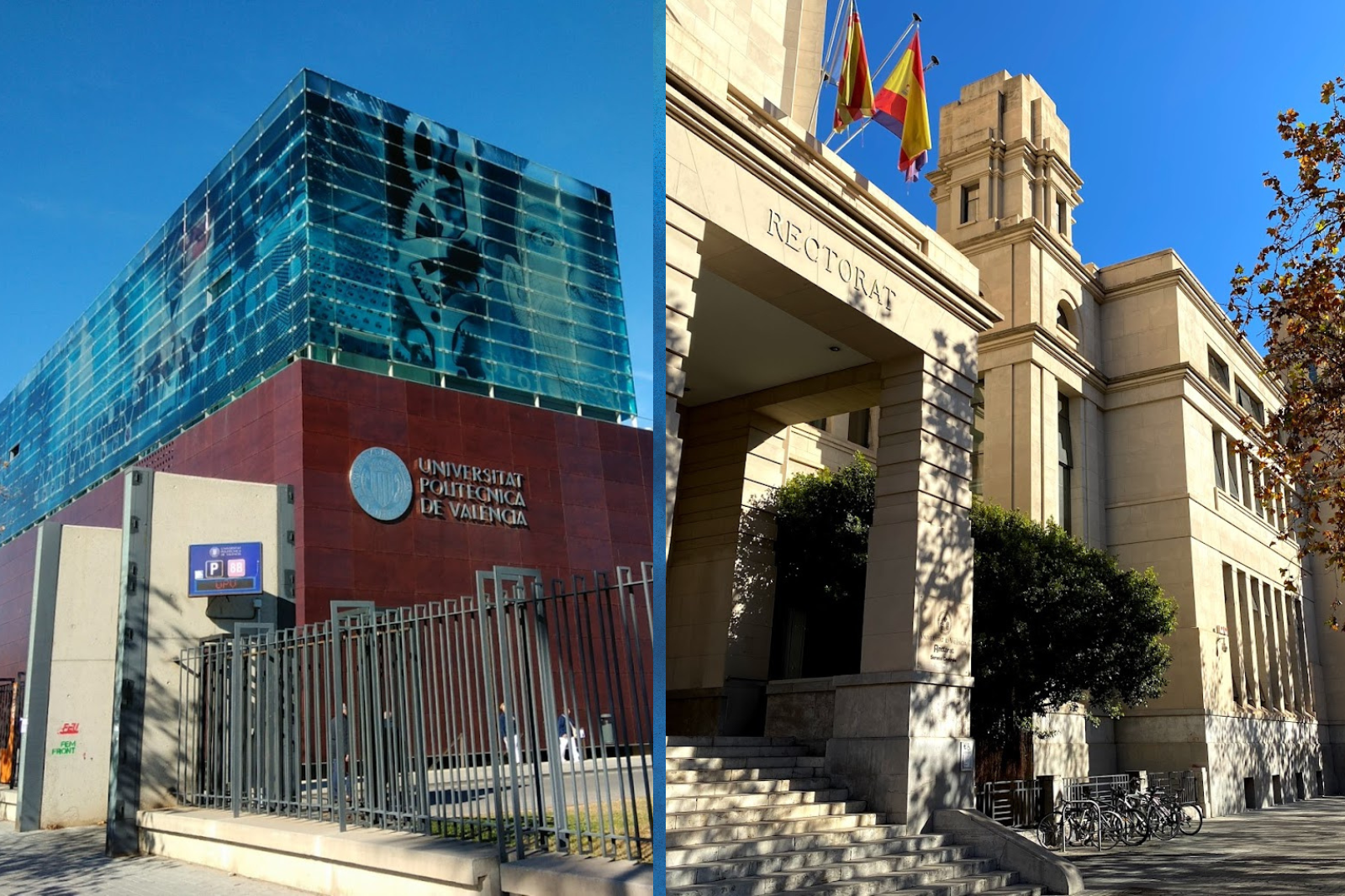
 In the latest
In the latest 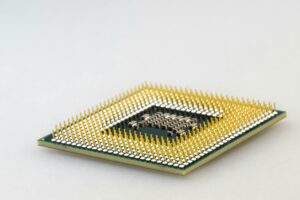





 What inspired the creation of this project?
What inspired the creation of this project? How will this initiative enhance Valencia’s reputation nationally and internationally?
How will this initiative enhance Valencia’s reputation nationally and internationally? As part of the Valencia Game City initiative, this major gaming event is set to debut in the city this summer. Inspired by DreamHack, the objective is putting gamers at the forefront again, while delivering an even more immersive and memorable experiences with cutting-edge technology. This event is not only a delight for fans but also a hub for the local and international gaming ecosystem and innovation. It will serve as a catalyst for industry development, fostering connections and driving growth.
As part of the Valencia Game City initiative, this major gaming event is set to debut in the city this summer. Inspired by DreamHack, the objective is putting gamers at the forefront again, while delivering an even more immersive and memorable experiences with cutting-edge technology. This event is not only a delight for fans but also a hub for the local and international gaming ecosystem and innovation. It will serve as a catalyst for industry development, fostering connections and driving growth.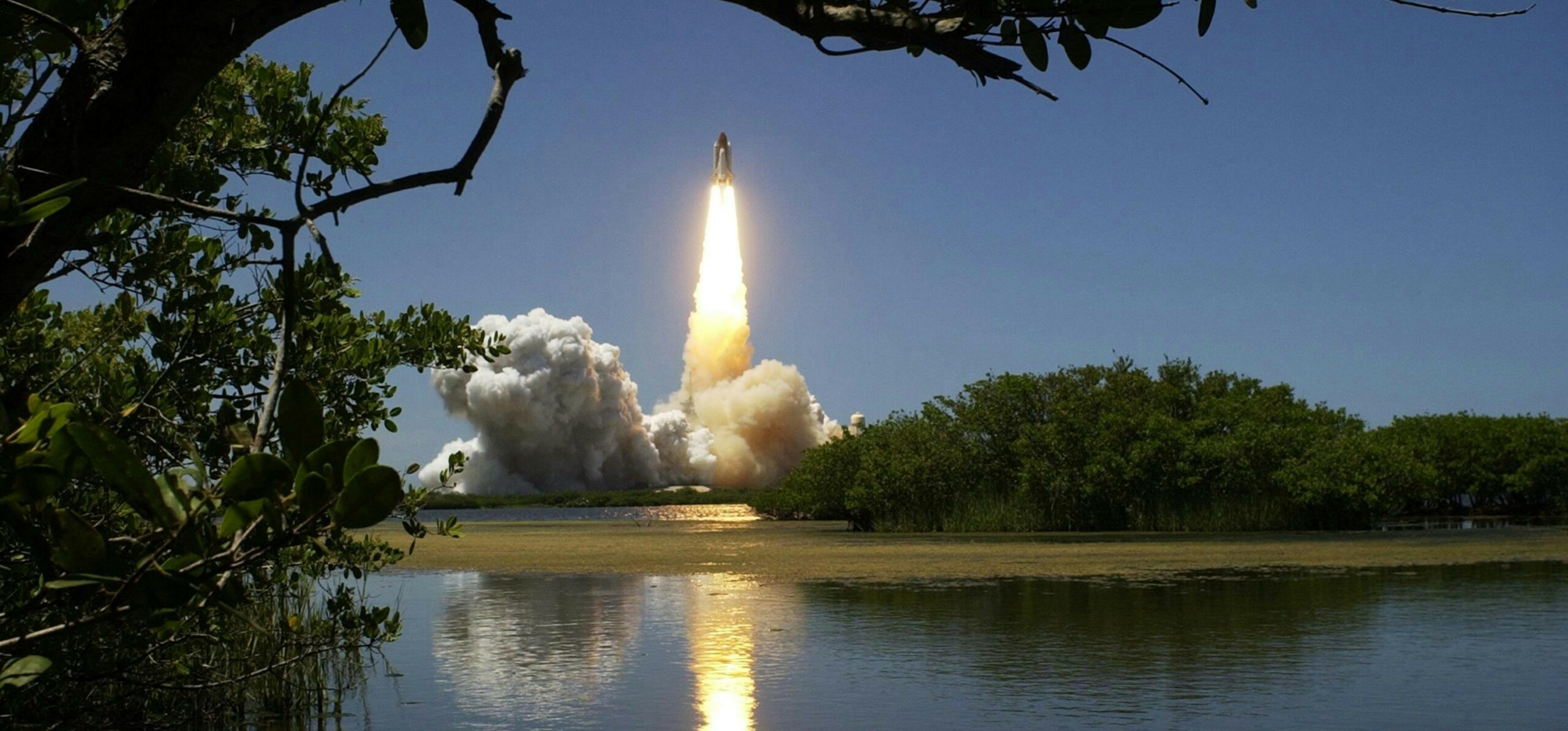
 Aerospace cluster
Aerospace cluster An outstanding example of active research groups is the UPV’s drone group, which not only contributes to the development of drones in the region, but also drives innovation at a national level.
An outstanding example of active research groups is the UPV’s drone group, which not only contributes to the development of drones in the region, but also drives innovation at a national level.



